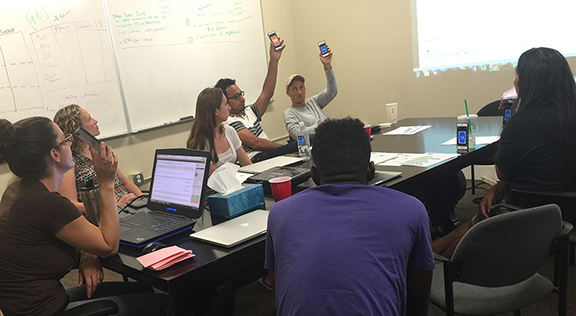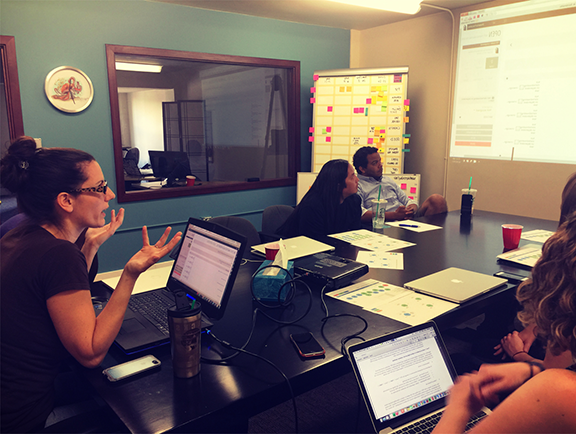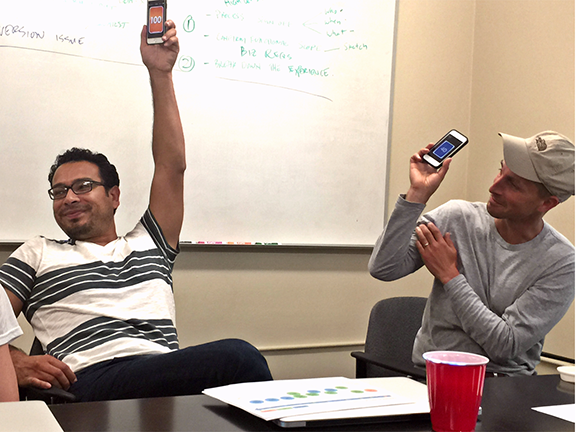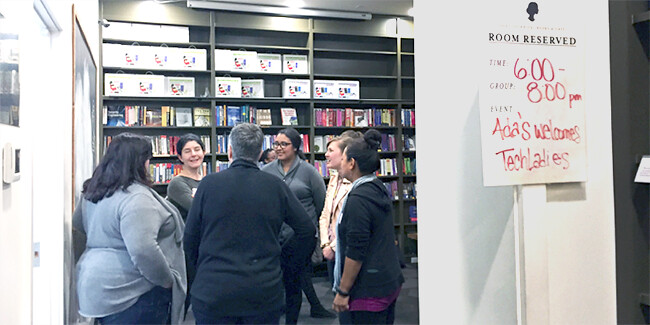It may sound a bit unconventional, but Scrum poker is actually an effective project planning tool. It’s a highly collaborative approach we like to use at SpatialDev to divide a project into manageable pieces.

Scrum poker is a fun way for our team to estimate the effort involved in building different parts of an application. It isn’t the first step in our planning process; rather, it takes place after we’ve come to understand our client’s business requirements, goals, and expectations, and after we’ve developed user stories that describe each feature and component that make up this experience. Scrum poker translates requirements from a user perspective to a plan the development team can implement. The outcome of Scrum poker is a detailed level of effort project plan.
How it works:
-
Prior to the Scrum poker team meeting(s), the Scrum owner documents and distributes user stories based on an understanding of the client’s functional requirements and goals for the project.
-
The team meets for Scrum poker. The Scrum poker owner leads the discussion by presenting each user story to be estimated. A small discussion is held for each user story to gain understanding and clarity, and to answer any questions.
-
After discussion, each estimator privately chooses an estimation card which best represents his/her idea of the general number of hours the user story in question will require. The numbers on the cards represent the complexity of a feature, rather than specific time. For example, an estimator might select a ‘1’ for a simple feature, ‘100’ for something more complex, and ‘40’ for something in between.
-
Team members reveal their choices at the same time. If there isn’t consensus, the high and low estimators each explain their choices.
-
After estimation explanations are complete, the team re-votes. If consensus is not met on the second vote, the Scrum poker owner assigns the high estimation.
-
This process is repeated for each user story, until all user stories have been estimated for the entire project. If a user story is estimated quite high, it might be divided into smaller, more defined and achievable pieces.
At Spatial Dev, we embrace Scrum poker for a number of reasons. First, the process requires the participation of the entire software development team involved in the project, to allow for the best estimation of effort. This means system architects, programmers, databases engineers, designers, data analysts, and testers. Second, this process allows our team to get an honest, global view of all the tasks involved in a given project, which allows us to identify and mitigate risks early in the project. Lastly, the process allows us to develop a level of effort in a fun and interactive way, which has a positive effect on our team’s engagement and creativity.
We have found that this initial investment in planning and estimation increases transparency for our clients, clarifies expectations, provides more accurate project timelines, increases effective use of technical resources, and positions the project to support the Agile process in an effective manner. This process positions both our clients and SpatialDev to succeed by providing vision and direction through the entire project.


Additional Resources to further learn about Scrum poker:




